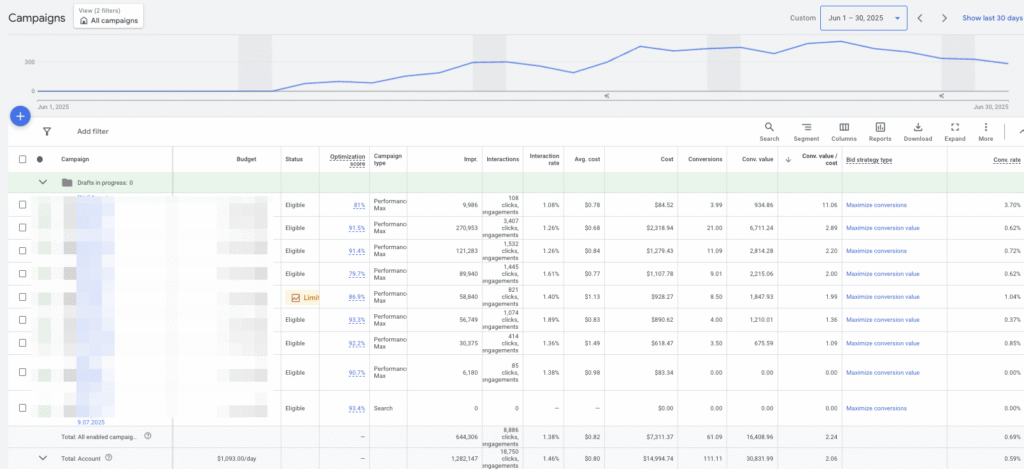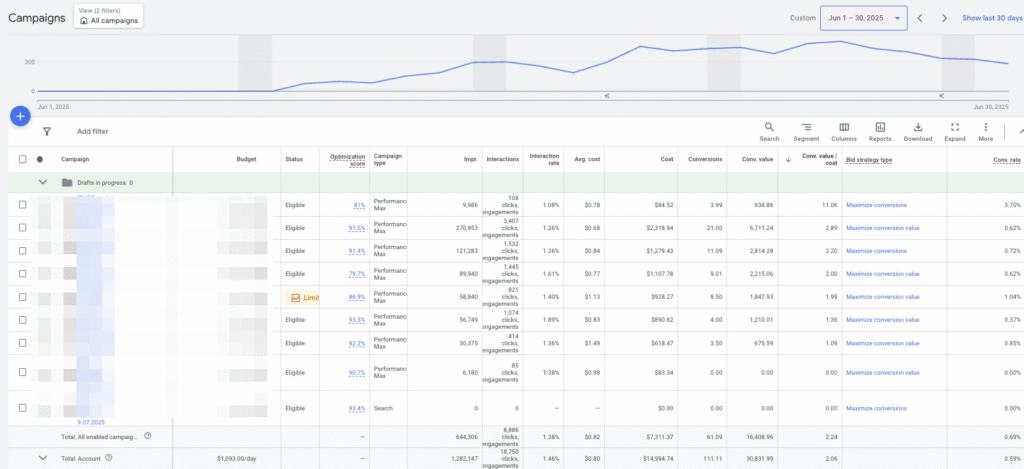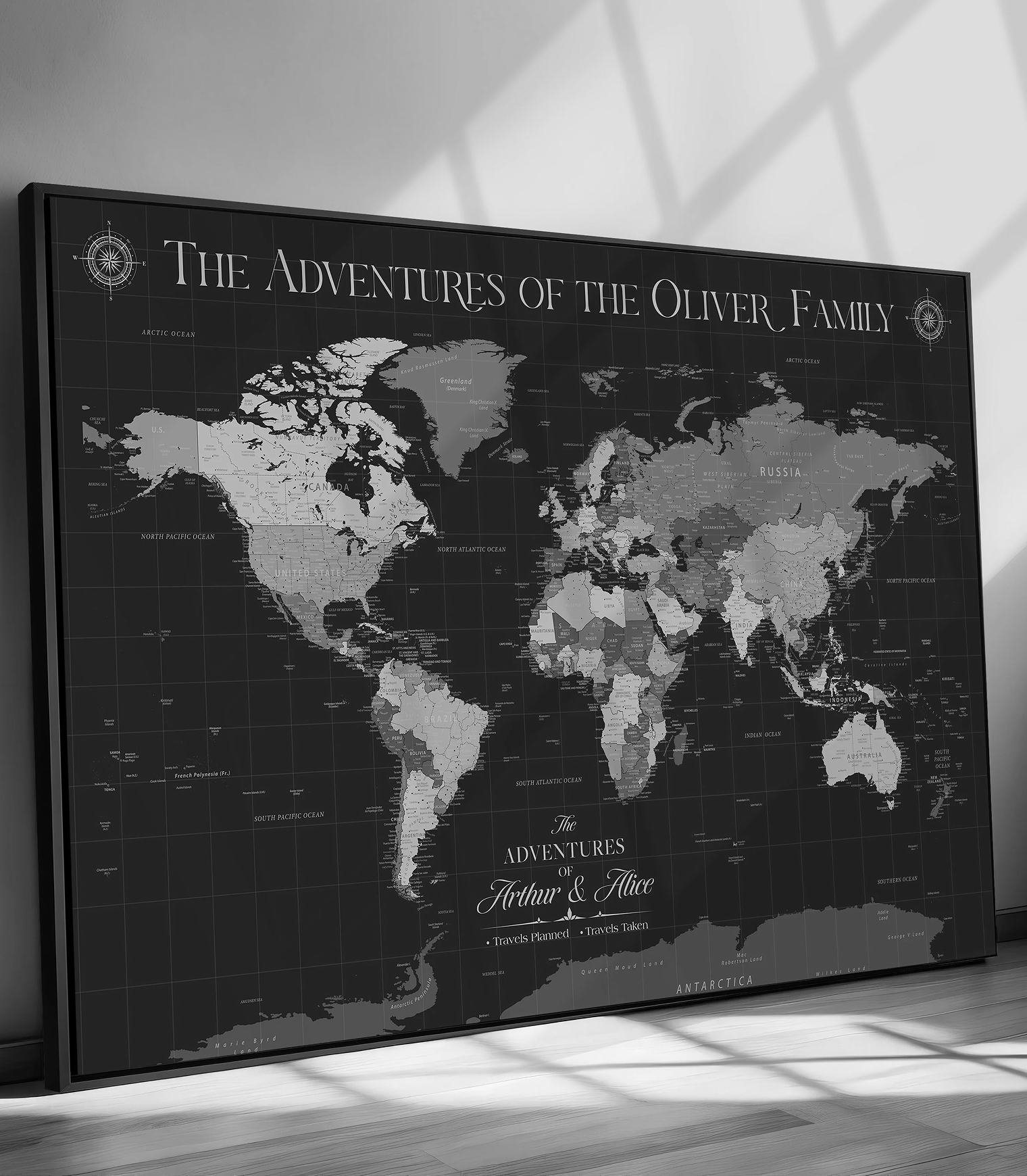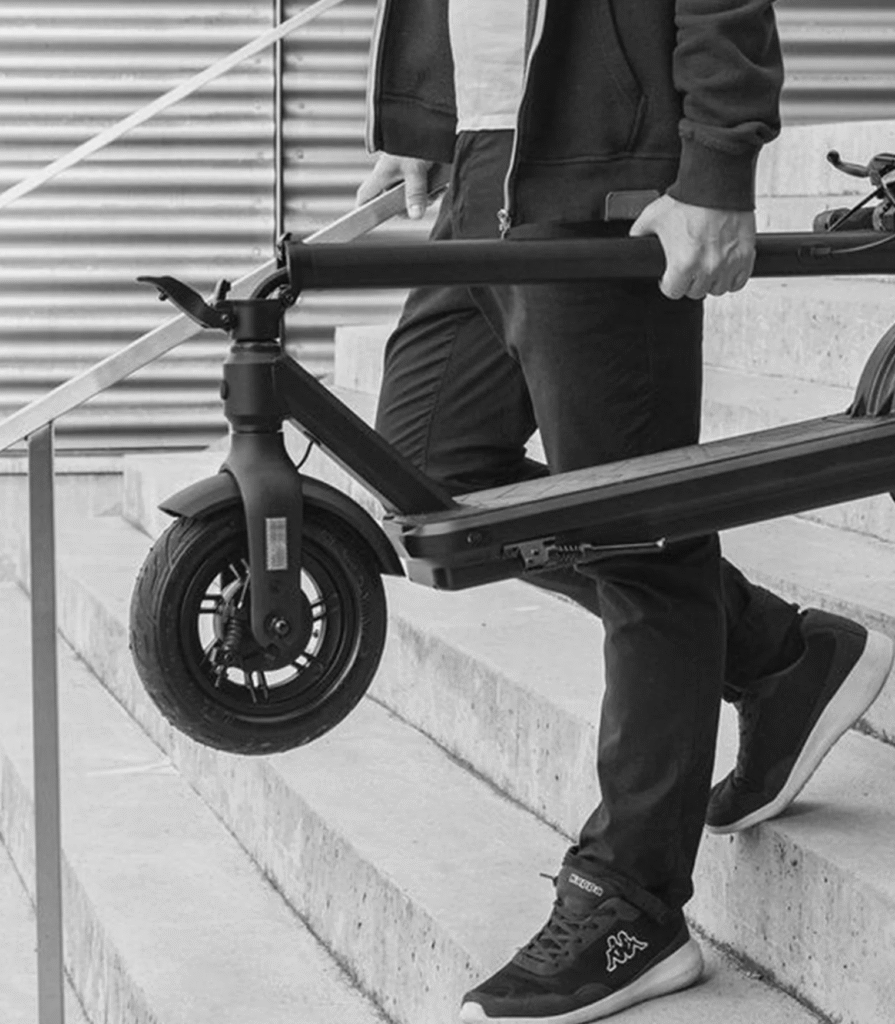The Client’s Story
This U.S.-based ecommerce brand offers high-quality canvas wall art crafted on demand and shipped for free across the country. Each print is made by hand using premium materials and vibrant fade-resistant inks.
Objectives
The goal was to optimize ad performance, cut wasted spend, and scale profitably by focusing on best-selling products and stronger audience signals. This project became a clear example of how Shopify case studies show the power of structured Google Ads management for ecommerce growth.
Challenge
The store had been running campaigns for five months without reaching break-even. Budgets were spread across thousands of products, most of which had no conversions. There was no scaling strategy, product focus, or advanced tracking. Purchases were the only conversion metric, leaving out critical signals like add-to-cart and checkout. We needed to stop budget waste and build a system that could scale long-term.

Google Ads Performance Before
The Growth Method
Shopping Feed Optimization: We audited the Google Merchant Center feed, improving titles, descriptions, and images to boost visibility and targeting.
Audience Signals: Built custom segments with high-intent behaviors, cart abandoners, and past customers, then applied them in Performance Max.
Category Segmentation: Isolated top-performing product categories, excluded low performers, and rebuilt campaigns around winners.
CRO Enhancements: Added fast payment options, integrated payment logos, and simplified navigation to raise conversion rates.
Early Wins
The optimized feed immediately improved ad relevance. By focusing budgets on five top categories, we improved spend efficiency. Manual CPC bidding lowered costs and raised ROAS from 1.45 to 2.06, finally surpassing the break-even threshold.
What Blocked Growth
Tracking Limitations: The campaign only tracked purchases, missing valuable micro-conversions like add-to-cart and checkout initiations. This lack of data meant Google’s optimization algorithms couldn’t fully leverage the potential signals from the customer journey, slowing down performance improvements.
Budget Allocation Issues: Google’s automated system was allocating budget to low-performing products, resulting in inefficient ad spend.
Scaling Constraints: While early tests showed potential, scaling was limited by tight budget control. The focus was narrowed to a few best-selling categories, and there was a need to carefully adjust spend allocation to maximize profitability while avoiding waste on underperforming products.
How We Fixed It
- We added tracking for micro-conversions like add-to-cart and checkout to improve data for Google’s optimization.
- Prioritized best-selling categories in the Google Merchant Center feed, ensuring ad spend was focused on high-performing products.
- Introduced manual CPC bidding for key categories to gain better control over spend and maximize ROAS.
- Integrated PayPal and Shop Pay at checkout and optimized the website menu, improving conversion rates.
Scaling Strategy
- High-performing keywords were scaled using manual CPC, with budgets increased gradually to maintain ROAS and control over spend.
- The keyword pool was expanded with long-tail and related search terms, which drove more targeted traffic without raising CPC.
- Performance Max was used to reach new segments, while audience signals based on high-intent behaviors and customer lists improved reach and conversion rates.
- Continuous testing of ad creatives, guided by data from TripleWhale, allowed the best-performing combinations to be scaled effectively.
Performance Snapshot
- Revenue: $30,831.99 (up from $32,027.37)
- Spend: $14,994.74 (down from $22,055.78)
- ROAS: 2.06 (up from 1.45)
This ecommerce case study proves that with the proper structure, Shopify brands can scale profitably through Google Ads.

Google Ads Performance After
Key highlights
- CPC reduced from $1.66 to $0.89
- Increased efficiency by focusing on high-performing categories and refining the product feed
- Optimized for cold traffic, resulting in higher-volume and lower-cost traffic
- Achieved break-even ROAS for the first time after 5 months of inefficiency
What’s Next
- Meta Ads Launch: Begin Meta Ads campaigns to expand reach and drive new customer acquisition through retargeting and lookalike audiences.
- Smart Bundling: Test product bundles to increase AOV and drive more conversions.
- LTV Funnel: Start building a post-purchase email funnel to increase customer retention and lifetime value (LTV).
- Expand Keyword Pool: Further expand non-branded keywords for additional traffic and lower CPC.




